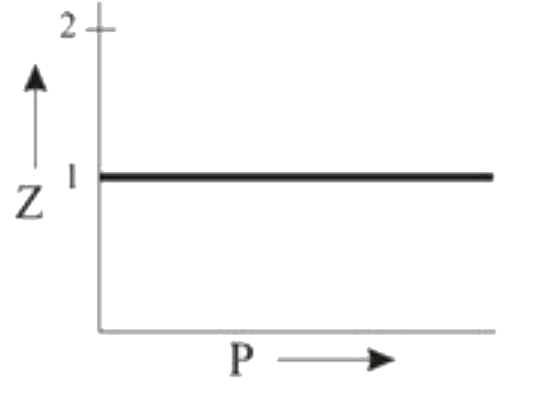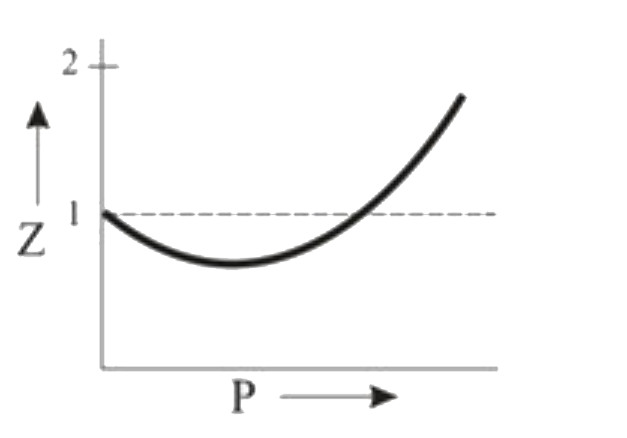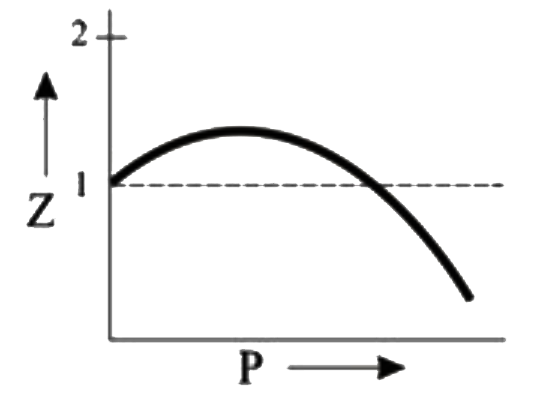Which of the following represents a plot of compressibility factor (Z) versus P at room temperature for helium?




The correct Answer is:A
To solve the question regarding the plot of compressibility factor (Z) versus pressure (P) at room temperature for helium, we will follow these steps:
Step 1: Understand the Compressibility Factor (Z)
The compressibility factor (Z) is defined as the ratio of the molar volume of a real gas (V_real) to the molar volume of an ideal gas (V_ideal) at the same temperature and pressure. Mathematically, it is expressed as:
Z=VrealVideal
Step 2: Ideal Gas Behavior
For an ideal gas, the compressibility factor (Z) is equal to 1. This means that at low pressures and high temperatures, gases behave ideally, and Z will approach 1.
Step 3: Real Gas Behavior
For real gases, especially at high pressures, the volume of the gas deviates from the ideal gas behavior. In the case of helium, as pressure increases, the compressibility factor (Z) increases because the real volume becomes greater than the ideal volume.
Step 4: Analyze Helium's Characteristics
Helium is a noble gas that exhibits non-ideal behavior under certain conditions. It is known for being difficult to compress and liquefy. Therefore, as pressure increases, the compressibility factor (Z) for helium will also increase.
Step 5: Identify the Correct Plot
Given the options (A, B, C, D), we need to find the plot that shows an increasing trend of Z with increasing pressure (P). The correct plot will start at Z = 1 (ideal gas behavior) and rise above this line as pressure increases.
Conclusion
After analyzing the characteristics of helium and the behavior of the compressibility factor, we can conclude that the correct option representing the plot of compressibility factor (Z) versus pressure (P) at room temperature for helium is Option 1.
---
The compressibility factor (Z) is defined as the ratio of the molar volume of a real gas (V_real) to the molar volume of an ideal gas (V_ideal) at the same temperature and pressure. Mathematically, it is expressed as:
Z=VrealVideal
For an ideal gas, the compressibility factor (Z) is equal to 1. This means that at low pressures and high temperatures, gases behave ideally, and Z will approach 1.
For real gases, especially at high pressures, the volume of the gas deviates from the ideal gas behavior. In the case of helium, as pressure increases, the compressibility factor (Z) increases because the real volume becomes greater than the ideal volume.
Helium is a noble gas that exhibits non-ideal behavior under certain conditions. It is known for being difficult to compress and liquefy. Therefore, as pressure increases, the compressibility factor (Z) for helium will also increase.
Given the options (A, B, C, D), we need to find the plot that shows an increasing trend of Z with increasing pressure (P). The correct plot will start at Z = 1 (ideal gas behavior) and rise above this line as pressure increases.
After analyzing the characteristics of helium and the behavior of the compressibility factor, we can conclude that the correct option representing the plot of compressibility factor (Z) versus pressure (P) at room temperature for helium is Option 1.
Similar Questions
Which of the following equations represents the compressibility factor for 1 mol of gas.
View SolutionThe value of compressibility factor (Z) for an ideal gas is
View SolutionWhich of the following plots represents an ideal binary mixture?
View Solutionwhich one is the expression for compressibility factor
View SolutionThe compressibility factor Z for the gas is given by
View SolutionWhich of the following plots does not represent Boyle's law?
View SolutionIn the above Question, near the point B, compressibility factor Z is about :
View SolutionWhich of the following resist hydrolysis at room temperature
View SolutionA plot of Farenheit temperature (tF) versus celsius temperature
View SolutionEther which is lipuid at room temperature is :
View Solution
